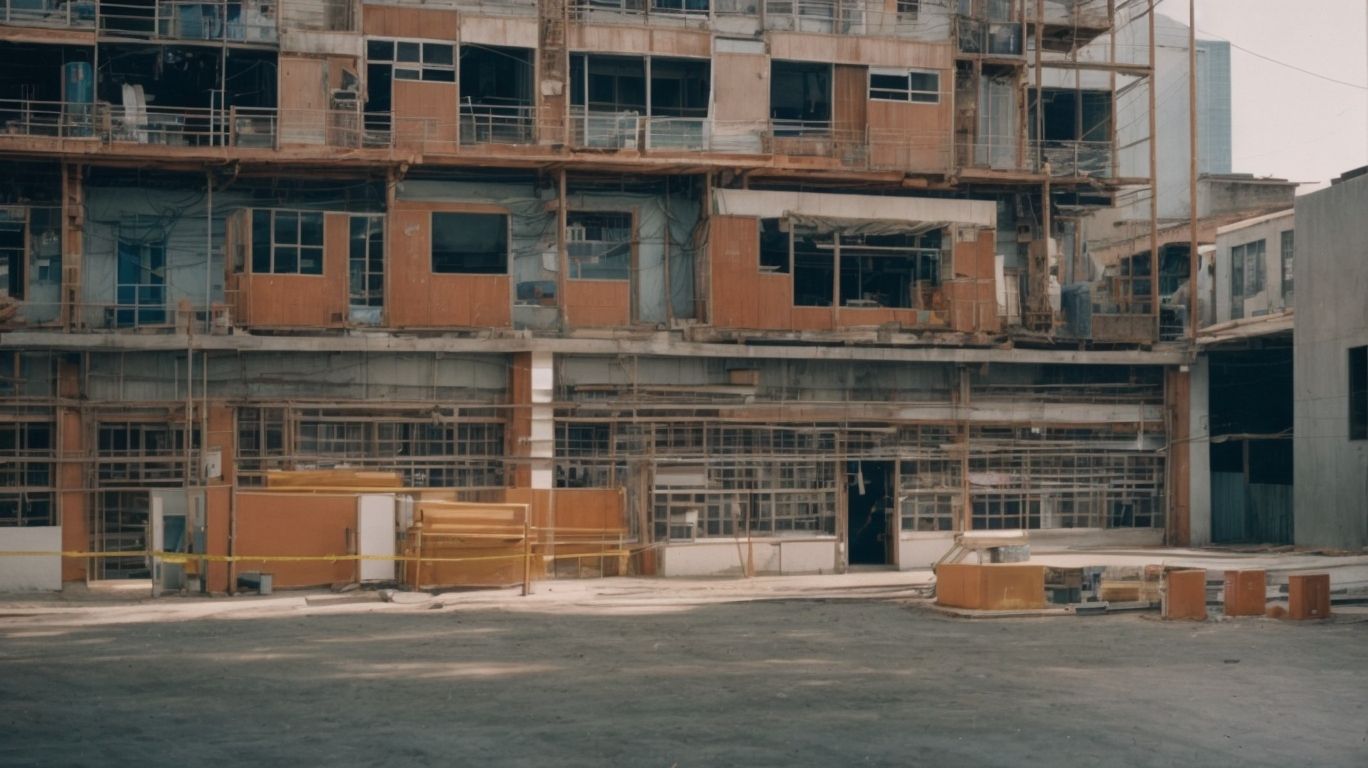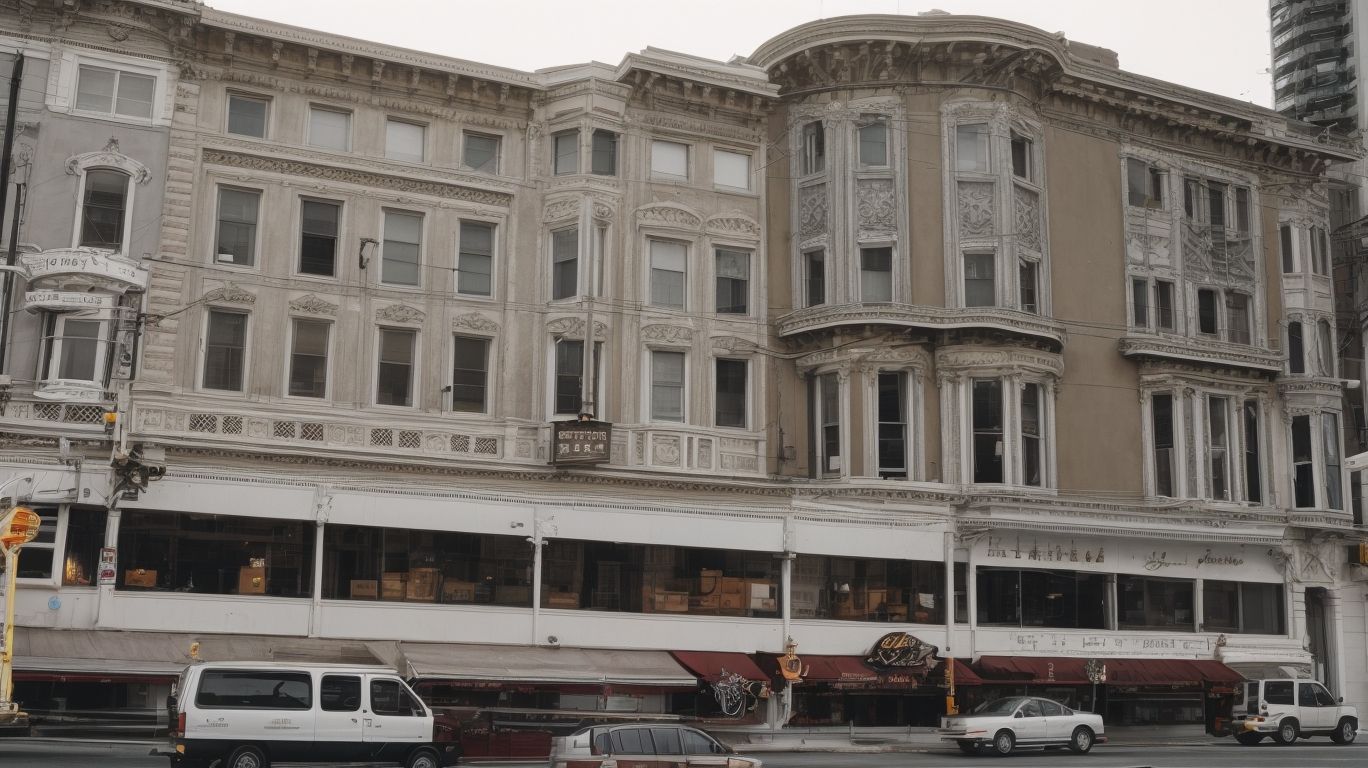
Maximizing Safety and ROI: A Deep Dive into Soft-Story Retrofit Technologies
Soft-story buildings are at a higher risk of collapse during earthquakes due to their weak first floors, posing a significant threat to occupants and property.
In this article, we will delve into the importance of soft-story retrofitting, the risks of not retrofitting, and the different technologies available for such retrofits.
These technologies include steel moment frames, concrete shear walls, and more. We will also explore the factors to consider when choosing a retrofit technology, as well as the steps and benefits of implementing a soft-story retrofit.
Join us as we maximize safety and ROI through a deep dive into soft-story retrofit technologies.
What is Soft-Story Retrofitting?
Soft-Story Retrofitting is a construction technique used to strengthen the structural integrity of buildings, particularly those with weak first floors or open spaces, in order to maximize safety and mitigate seismic vulnerability.
This process involves reinforcing the lower levels of a building, often found in older apartment buildings, with stronger materials and additional support systems to better withstand lateral forces during an earthquake.
Common methods include adding steel frames or braces, installing shear walls, and utilizing specialized construction materials designed to enhance the building’s overall stability. By implementing these measures, the risk of structural collapse during seismic events is significantly reduced, contributing to a safer and more resilient built environment for occupants and the surrounding community.
Why is Soft-Story Retrofitting Important?
Soft-Story Retrofitting is crucial due to the need for building resilience, risk mitigation, and compliance with building codes. It addresses structural deficiencies and enhances the building’s stability and safety measures.
This engineering solution significantly reduces the risk associated with multi-story buildings during seismic events. It safeguards occupants and minimizes potential property damage. Compliance with building codes is essential for ensuring the safety and security of the structure. Soft-story retrofitting plays a vital role in meeting these regulatory requirements. By integrating innovative engineering techniques, such as adding shear walls or strengthening the existing framing, soft-story retrofitting optimizes the building’s ability to withstand seismic forces. This provides a sustainable and resilient solution for long-term risk management.
What are the Risks of Not Retrofitting?
Not implementing soft-story retrofitting exposes buildings to significant seismic hazard, potential structural deficiencies, and non-compliance with building regulations, leading to increased risk and vulnerability.
This absence of retrofitting increases the likelihood of buildings failing during an earthquake, posing a threat to both occupants and nearby structures.
The structural deficiencies in soft-story buildings can lead to disproportionate collapse, causing extensive damages and potential loss of life.
Negligence in addressing these vulnerabilities can result in legal and financial consequences for building owners and stakeholders.
It is essential for risk management and building regulations to prioritize the implementation of soft-story retrofitting to enhance community resilience and safety.
What are the Different Types of Soft-Story Retrofit Technologies?
The different types of soft-story retrofit technologies include steel moment frames, concrete shear walls, fiber reinforced polymers (FRP), buckling-restrained braces (BRBs), and cross-laminated timber (CLT), each offering unique engineering solutions to strengthen buildings and meet construction standards.
Steel moment frames are commonly used in seismic retrofit projects due to their strength and flexibility, while concrete shear walls provide robust lateral support.
FRP offers lightweight yet durable reinforcement, and BRBs are known for their energy dissipation capabilities. CLT, a newer technology, combines sustainability with structural performance.
Structural engineering considerations involve assessing building loads, foundation repairs, and ensuring compliance with seismic retrofit regulations for a resilient built environment.
Steel Moment Frames
Steel moment frames are a prominent soft-story retrofit technology utilized for building renovation and seismic resistance. This technology offers robust retrofit designs and effective strategies to enhance structural integrity.
Steel moment frames are crucial for providing lateral resistance to building structures, especially in vulnerable areas like open parking or storefronts. This technology is commonly used to strengthen older buildings and ensure their ability to withstand seismic forces, ultimately improving overall safety.
When incorporating steel moment frames in retrofit designs, careful planning is essential. Factors such as building layout, load distribution, and connection details must be considered to achieve optimal seismic performance and structural stability.
Concrete Shear Walls
Concrete shear walls play a crucial role in soft-story retrofitting. This process involves meticulous planning, building upgrades, and comprehensive seismic analysis, often requiring expert construction management for successful implementation.
These walls are meticulously planned and strategically placed within the building structure to effectively redistribute lateral forces during seismic events. The impact of these walls on building upgrades is significant, as they not only enhance the structural integrity but also contribute to the overall resilience of the building.
Seismic analysis is imperative to determine the most suitable placement and design of these walls, ensuring maximum effectiveness in minimizing seismic vulnerability. Expert construction management is essential to coordinate the installation of shear walls with other retrofit measures and to meet stringent safety standards.
Fiber Reinforced Polymers (FRP)
Fiber reinforced polymers (FRP) offer versatile solutions for soft-story retrofitting. This process requires thorough building evaluation, retrofit assessments, and careful implementation to achieve seismic upgrades and ensure building compliance.
Advanced composite materials offer excellent strength and durability, making them ideal for reinforcing or improving the structural performance of soft-story buildings.
Conducting a thorough building evaluation is essential in identifying vulnerable areas and determining the most suitable FRP applications. Retrofit assessments are crucial in evaluating the current structural conditions and devising effective retrofit strategies.
Compliance with building standards is essential to ensure that the retrofitting process meets safety and quality requirements, ultimately enhancing the seismic resilience of the structure.
Buckling-Restrained Braces (BRBs)
Buckling-restrained braces (BRBs) are instrumental in soft-story retrofit projects, contributing to building integrity, seismic protection, and construction efficiency through their effective application and structural enhancement.
BRBs provide a robust solution for addressing the vulnerability of soft-story buildings to seismic forces. Their innovative design allows for controlled yielding and energy dissipation, significantly improving the overall seismic performance of the structure.
The installation process of BRBs is efficient, minimizing disruptions to building occupants during retrofit projects and reducing construction timelines. These braces offer a reliable and cost-effective option for enhancing the seismic resilience of both existing and new buildings.
Cross-Laminated Timber (CLT)
Cross-laminated timber (CLT) introduces innovative retrofit methodologies for soft-story buildings, facilitating building enhancements, seismic monitoring, and contributing to construction success through sustainable and effective implementation.
This method involves the strategic placement of CLT panels to reinforce and strengthen soft-story buildings, which have historically been vulnerable to seismic activity.
CLT retrofitting not only enhances the structural integrity of these buildings but also significantly reduces the risk of damage and collapse during earthquakes.
The use of CLT as a retrofit technology aligns with sustainable construction practices, making it an environmentally friendly choice for building upgrades.
Integrating seismic monitoring systems ensures ongoing safety and efficiency, providing valuable data to optimize future retrofitting strategies.
What Factors Should be Considered when Choosing a Soft-Story Retrofit Technology?
When selecting a soft-story retrofit technology, it’s essential to consider various factors. These include the building’s type and size, the seismic zone and soil conditions, the building’s occupancy and use, as well as cost and time constraints. These factors play a crucial role in determining the most suitable retrofit solution.
The building’s type is a significant consideration in choosing a retrofit technology. For instance, residential buildings may have different requirements compared to commercial or mixed-use structures.
The seismic conditions and soil properties in the building’s location greatly impact the choice of retrofit technology. Additionally, it’s important to consider the building’s occupancy and use, as the needs and requirements can vary significantly between different types of buildings. Budget constraints and time limitations are also critical factors that should not be overlooked when making this decision.
Building Type and Size
The building’s type and size play a crucial role in determining the suitable soft-story retrofit technology, influencing the scope of required structural upgrades, retrofitting techniques, and ongoing building maintenance considerations.
When considering retrofit options for a building, factors such as size and type can greatly impact the choice between approaches such as steel moment frames, reinforced concrete walls, or braced frames.
In the case of larger buildings, the retrofit process may involve more complex engineering solutions and careful coordination with building occupants to minimize disruption.
Ongoing maintenance is also crucial, requiring regular inspections and proactive measures to ensure the effectiveness and longevity of the retrofit technology.
It is essential to understand the specific needs of a building based on its type and size when considering soft-story retrofit options.
Seismic Zone and Soil Conditions
The seismic zone and soil conditions greatly impact the choice of appropriate soft-story retrofit technology, influencing its implementation, building adaptation, and the expected seismic performance to ensure effective risk mitigation.
Understanding the specific seismic zone and soil conditions of a site is critical in determining the most suitable retrofit solution. For instance, in high seismic zones with soft, loose soil, the retrofit approach may need to account for greater lateral forces and potential soil liquefaction. On the other hand, areas with firmer soil may require different retrofit strategies to address varying ground movement. These considerations are crucial for ensuring the retrofit technology can effectively enhance the building’s structural integrity and mitigate seismic risks.
Cost and Time Constraints
Cost and time constraints play a pivotal role in the selection of a suitable soft-story retrofit technology, influencing the retrofit designs, building evaluation, and considerations for achieving building sustainability within the specified limitations.
When making decisions about retrofit solutions, it is important to consider constraints such as cost and time. These factors play a significant role in determining the most effective approach. Additionally, when evaluating structural vulnerabilities and selecting retrofit measures, it is crucial to keep these constraints in mind.
In order to achieve sustainability goals, it is necessary to align them with financial and temporal limitations. This requires a strategic integration of technologies that not only improve structural strength, but also contribute to long-term resilience and energy efficiency.
Building Occupancy and Use
The building’s occupancy and use are vital considerations when selecting a soft-story retrofit technology, guiding its execution, potential modifications, and the pursuit of effective seismic mitigation for optimized building safety.
These factors strongly influence the choice of retrofit approach, as the specific activities within the building, such as residential, commercial, or mixed-use, can have varying structural demands.
For instance, residential soft-story buildings may require different retrofit strategies compared to commercial or office spaces. The level of foot traffic, equipment loads, and structural stress within the building must be carefully evaluated to tailor the retrofit technology effectively. By aligning the retrofit with the unique use and occupancy of the building, the seismic resilience and overall safety can be significantly enhanced.
What are the Steps to Implementing a Soft-Story Retrofit?
The process of implementing a soft-story retrofit involves several critical steps, including initial assessment and planning, design and permitting, as well as construction and inspections to ensure the successful retrofitting of the building.
During the initial assessment and planning stage, engineers and architects evaluate the structural integrity of the building, identifying potential vulnerabilities and determining the most suitable retrofit solutions.
Subsequently, the design and permitting phase involves creating detailed plans and obtaining necessary approvals from local authorities. This is crucial for ensuring that the retrofit complies with building codes and regulations.
The construction and inspection stages entail the actual implementation of the retrofit measures, followed by thorough inspections to verify the structural enhancements and ensure the building’s safety and stability.
Initial Assessment and Planning
The initial assessment and planning phase for a soft-story retrofit is essential for evaluating seismic risk, ensuring construction compliance, and identifying necessary structural upgrades to lay the groundwork for the retrofit project.
This stage sets the foundation for understanding the vulnerabilities of the building, which is crucial in determining the level of seismic risk it faces. By assessing the structural integrity and compliance with construction standards, the planning phase enables engineers to pinpoint specific areas that require reinforcement.
It also aids in devising a tailored strategy to reduce the building’s vulnerability to potential earthquakes and fortify its overall resilience. The initial assessment and planning phase is the starting point that guides the entire retrofit process, playing a pivotal role in ensuring the safety and stability of the structure.
Design and Permitting
The design and permitting phase of a soft-story retrofit involves the formulation of retrofit strategies, the evaluation of building performance, and the adherence to building regulations to obtain the necessary approvals for the retrofit project.
During this crucial stage, engineers and architects work closely to develop retrofit strategies that effectively address the vulnerabilities of the building’s soft-story structure.
Building performance is assessed through detailed structural analysis and simulations to ensure the retrofit measures meet safety and resilience standards. Meticulous attention is paid to compliance with building regulations, codes, and standards, encompassing seismic resilience, load capacity, and architectural integrity, to secure the required permits and approvals for the retrofit project.
Construction and Inspections
The construction and inspections phase of a soft-story retrofit involves the actual implementation of retrofit measures, thorough inspections, and the incorporation of seismic upgrades to ensure the building’s long-term stability and maintenance.
This crucial phase plays a pivotal role in enhancing the safety and resilience of the structure against potential seismic events.
The implementation of retrofit measures includes strengthening weak structural components, installing steel frames, and adding shear walls to improve the building’s ability to withstand lateral forces.
Thorough inspections, including structural and foundation assessments, are conducted to identify any existing vulnerabilities and address them effectively.
The pursuit of seismic upgrades and ongoing building maintenance are integral for ensuring the continued structural integrity of the retrofitted soft-story building.
What are the Benefits and ROI of Soft-Story Retrofitting?
The benefits of soft-story retrofitting include increased safety, reduced liability, higher property value, potential for insurance discounts, and the opportunity for additional space and revenue generation, all achieved through cost-effective solutions and enhanced building resilience.
By implementing structural improvements, property owners can mitigate the risks associated with seismic events, protect their investments, and attract potential buyers seeking secure and stable structures, resulting in a substantial return on investment.
Retrofitting may lead to insurance premium reductions, reflecting the heightened safety measures. The creation of new usable space within the building can lead to increased rental income or enhanced property functionality, presenting further financial advantages.
Increased Safety and Reduced Liability
Soft-story retrofitting leads to increased safety, reduced liability, and improved building resilience, contributing to effective risk mitigation and structural engineering solutions through cost-effective measures.
Soft-story retrofitting is essential for ensuring the structural integrity of buildings, especially in earthquake-prone areas. This process involves reinforcing vulnerable areas, such as open parking spaces or commercial storefronts, to prevent collapse during seismic events. Not only does this proactive approach protect occupants and assets, but it also reduces the risk of costly legal disputes and insurance claims. By implementing these measures, buildings demonstrate a commitment to community safety and long-term sustainability.
Higher Property Value and Insurance Discounts
Soft-story retrofitting contributes to higher property value, potential insurance discounts, and the implementation of strategic retrofit strategies, building maintenance, and adherence to building regulations, offering long-term financial benefits to property owners.
This form of retrofitting not only enhances the structural integrity of buildings, making them more resilient to seismic events, but also increases their appeal to potential buyers or renters.
Property owners who invest in soft-story retrofitting may also be eligible for insurance discounts, as insurers recognize the reduced risk of damage and subsequently offer lower premiums. Implementing these retrofit strategies also provides peace of mind for property owners, knowing their buildings are compliant with safety standards and regulations, ultimately reducing liability and maintaining property value in the long run.
Potential for Additional Space and Revenue Generation
Soft-story retrofitting presents opportunities for additional space and revenue generation, necessitating comprehensive structural planning, building upgrades, and seismic analysis to maximize the building’s potential for diverse uses and income generation.
Owners and developers can unlock the untapped potential of their properties by addressing the structural vulnerabilities of soft-story buildings. This can allow for additional leasable space or potential for mixed-use development.
The strategic integration of seismic analysis and building upgrades not only ensures safety, but also enhances the building’s market value. This can attract a wider range of tenants and increase rental income. By taking a comprehensive approach to retrofitting, a property can be transformed into a more versatile and lucrative asset, demonstrating a commitment to both sustainability and financial growth.




No Comments